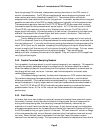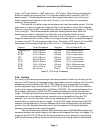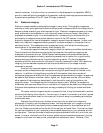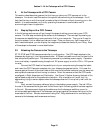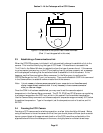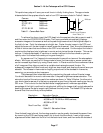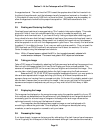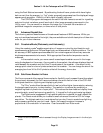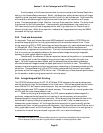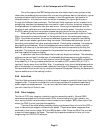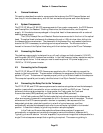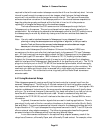
Section 3 - At the Telescope with a CCD Camera
Page 17
This preliminary step will save you much time in initially finding focus. The approximate
distance behind the eyepiece tube for each of our CCD cameras is listed in Table 3.1 below:
Camera Distance
ST-5C 0.660 inch
ST-237/STV 0.680 inch
ST-6 0.560 inch
ST-7E/8E/9E 0.920 inch
Table 3.1 - Camera Back Focus
Back Focus Distance
from Table 3.1
Diffuser
To achieve fine focus, insert the CCD head into the eyepiece tube, taking care to seat it,
and then enter the CCDOPS FOCUS mode. The Focus command automatically displays
successive images on the screen as well as the peak brightness value of the brightest object in
the field of view. Point the telescope at a bright star. Center the star image in the CCD, and
adjust the focus until the star image is a small as can be discerned. Next, move the telescope to
a field of fainter stars that are dimmer so the CCD is not saturated. Further adjust the focus to
maximize the displayed star brightness in counts and minimize the star diameter. This can be
tedious. It helps considerably if a pointer or marker is affixed to the focus knob so you can
rapidly return to the best focus once you've gone through it.
An exposure of 1 to 3 seconds is recommended to smooth out some of the atmospheric
effects. While you can use the Full frame mode to focus, the frame rate or screen update rate
can be increased significantly by using Planet mode. In Planet mode the Focus command takes
a full image and then lets you position a variable sized rectangle around the star. On
subsequent images the Planet mode only digitizes, downloads, and displays the small area you
selected. The increase in frame rate is roughly proportional to the decrease in frame size,
assuming you are using a short exposure.
The telescope focus is best achieved by maximizing the peak value of the star image.
You should be careful to move to a dimmer star if the peak brightness causes saturation. The
saturation levels of the various resolution modes are shown in Table 3.2 below. Another point
you should also be aware of is that as you approach a good focus, the peak reading can vary by
30% or so. This is due to the fact that as the star image gets small, where an appreciable
percentage of the light is confined to a single pixel, shifting the image a half a pixel reduces the
peak brightness as the star's image is split between the two pixels. The Kodak CCD pixels are
so small that this is not likely to be a problem.
Resolution Saturation Counts
High Res ~20,000 for ST-7E/8E ABG Cameras,
~40,000 for ST-7E/8E Non ABG cameras,
~65,000 for ST-9E
Med/Low Res 65,000
Table 3.2 - Saturation Values
Once the best focus is found, the focusing operation can be greatly shortened the second time
by removing the CCD head, being careful not to touch the focus knob. Insert a high power
eyepiece and slide it back and forth to find the best visual focus, and then scribe the outside of



